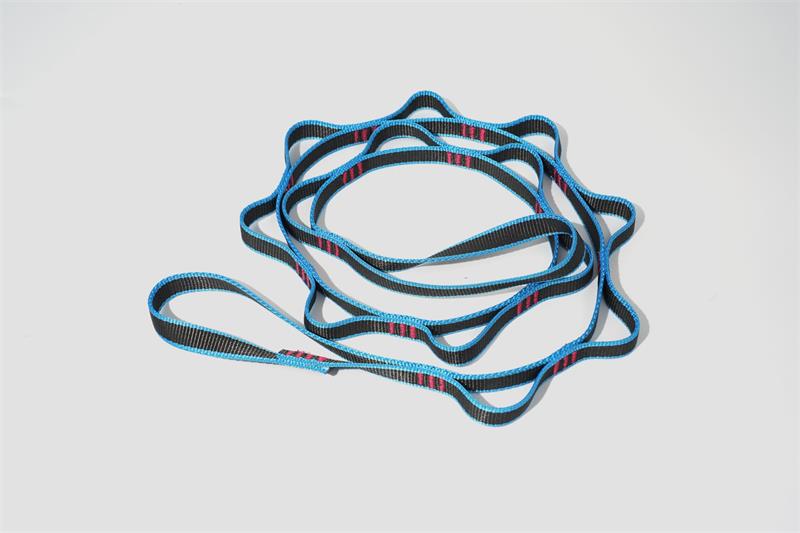A Climbing Loop Sling is a versatile accessory used in rock climbing and mountaineering. Typically made from durable nylon , it forms a closed loop for anchoring, extending protection, or creating improvised harnesses. Its lightweight design (often 10-60cm) allows easy carrying on gear loops. Common applications include equalizing anchors, constructing rappel points, or attaching gear. Rated for high loads (15+ kN), it's a critical safety component. Modern variations feature heat-resistant stitching or pre-sewn configurations for reliability. Always inspect for wear before use to ensure integrity.

Features
High Tensile Strength: Typically constructed from Dyneema or nylon, loop slings boast a minimum breaking strength of 22 kN (4,945 lbf), ensuring safety during critical loads.
Lightweight Design: Weighing just 30-50 grams (1.1-1.8 oz) per meter, these slings minimize pack weight without compromising durability.
Abrasion Resistance: Engineered with reinforced stitching or seamless designs, they withstand over 5,000 cycles against sharp rock edges in UIAA testing.
Multi-Use Functionality: Available in lengths from 60 cm to 240 cm, allowing configurations as anchors, extenders, or hauling systems.
Temperature Tolerance: Performs reliably in extremes from -40°C to +80°C (-40°F to 176°F), maintaining flexibility in icy conditions.
UV Stability (optional): Specialty models retain 90% strength after 500 hours of UV exposure, ideal for alpine environments.
Applications
1. Rock Climbing & Mountaineering
The Climbing Loop Sling is essential for anchoring, extending protection, or creating equalized anchor systems. Its lightweight design and high-strength materials make it ideal for multi-pitch climbs and alpine expeditions.
2. Arboriculture & Tree Work
Arborists rely on loop slings for rigging, limb support, and securing climbing systems. The durable construction withstands friction against bark, while the adjustable length enhances versatility in canopy operations.
3. Rescue Operations
Emergency teams use loop slings for high-angle rescues, load distribution, and patient stabilization. Their rapid deployment capability proves critical in confined space or water rescue scenarios.
4. Industrial Rope Access
Technicians employ slings for fall arrest systems, tool tethering, and structural anchoring during facade maintenance or wind turbine repairs. Heat-resistant variants are preferred near welding operations.
5. Tactical & Military Applications
Special forces utilize low-visibility slings for rappelling, equipment hauling, and improvised harnesses. The silent, non-reflective materials prevent detection in covert operations.
6. Adventure Racing
Obstacle course competitors carry compact slings for traversing ropes, securing gear, or emergency repairs. The quick-dry feature is valued in aquatic race segments.
FAQ
A Climbing Loop Sling is a versatile piece of climbing gear made from durable materials like nylon or Dyneema. It's used for anchoring, extending protection, or creating quick attachments in climbing systems.
Consider length (60cm-120cm), material (Dyneema for lightweight, nylon for abrasion resistance), and strength (typically 22kN). Match it to your climbing style – trad, sport, or alpine.
While loop slings offer flexibility, they lack the rigid gate of quickdraws. Best for extending placements or building anchors, but not ideal for rapid clipping on sport routes.
Check for:
- Frayed stitching
- Abrasion marks
- UV damage (discoloration)
- Hardened material (indicates chemical exposure)
Keep them dry, away from direct sunlight, and loosely coiled (not tightly knotted) to prevent material fatigue. Store separately from sharp objects.